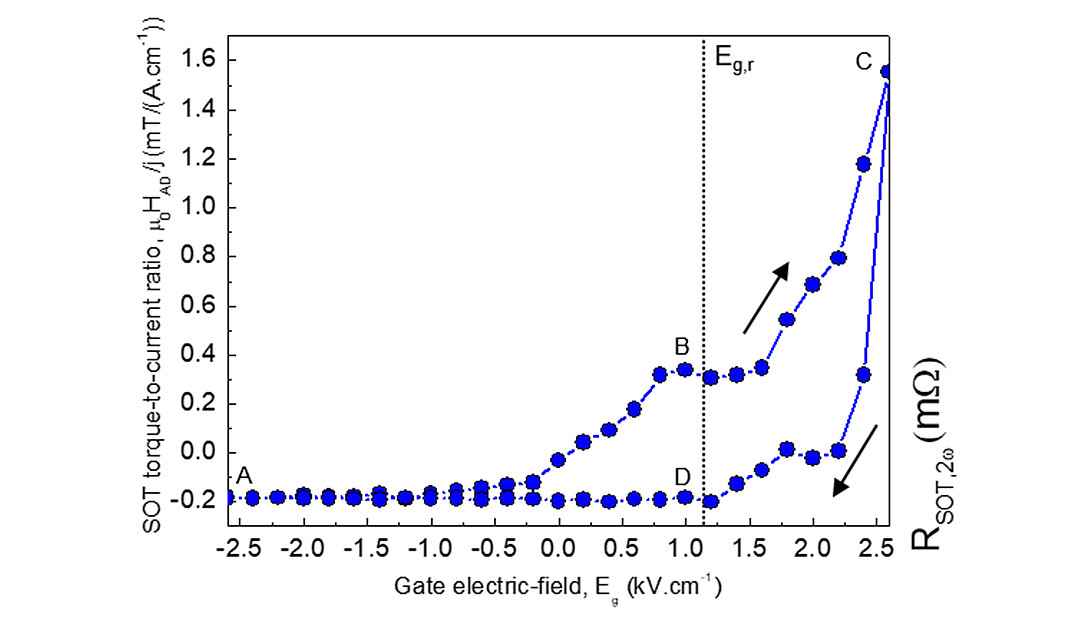Spin-orbit torques (SOTs) have the potential to manipulate magnetization using in-plane current, and two-dimensional electron gases (2DEGs) provide a highly efficient spin-to-charge current interconversion. This paper reports the non-volatile electric-field control of SOTs in an oxide-based Rashba-Edelstein 2DEG.

Gate electric-field dependence of the spin-orbit torques (more precisely of the anti-damping-like effective field µ0HAD), demonstrating the non-volatile electric-field control of the spin-orbit torques.
We recently reported a significant progress in the path towards a next generation of memory devices with greater energy efficiency. The non-volatility is a key ingredient to optimize the power consumption of memory and logic devices. The Topological Spintronics team, in collaboration with Unité Mixte de Physique CNRS/Thales, made a breakthrough in modulating the spintronics properties of a two-dimensional electron gas (2DEG) using an electric field. We used Ta/CoFeB/MgO stacks on (001)-oriented SrTiO3 substrates, which offer key advantages for integration into magnetic tunnel junctions with high tunnel magnetoresistance.
To characterize the magnetic and electrical properties of the 2DEG, we injected an input current in a Hall cross, and measured the longitudinal and transverse Hall resistances as a function of the magnetic field. The sheet resistance of the device decreases by 380% as the temperature reduces, which is characteristic of 2DEG conduction.
Furthermore, the 2DEG conductivity can be modulated using an electric field applied across the SrTiO3 substrate, with two switchable and remanent high and low-resistivity states of the device, with a resistance contrast of 1064% (615% at remanence).
Using harmonic Hall voltage measurements methods, we thenmeasured the spin-orbit torques in the Hall cross, and found that the SOT effective fields are different for high and low-resistivity states. We explore the modulation of the spin-orbit torques (SOTs), showing that the SOT hysteresis results from two factors: the hysteretic modulation of the 2DEG resistivity, and the variation of the conversion with the 2DEG Fermi level position. This non-volatile electric control of the SOTs in 2DEGs has the potential to create a new generation of spin-orbit torque devices, with the experimental finding of a reproducible inversion of the SOT torque signs, and of a control of the SOTs that could be used to build reconfigurable SOT-MRAMs, and manipulate skyrmions, domain walls, or magnons.
Team: Topological spintronics
Collaboration: Unité Mixte de Physique CNRS/Thales
Funding: ANR Contrabass, Institut Universitaire de France, ERC Fresco, ITN Spear, PTA
Further reading: Non-volatile electric control of spin-orbit torques in an oxide two-dimensional electron gas, C. Grezes, A. Kandazoglou, M. Cosset-Cheneau, L. M. Vicente Arche, P. Noël, P. Sgarro, S. Auffret, K. Garello, M. Bibes, L. Vila & J.-Ph. Attané Nat. Commun. 14, 2590 (2023), hal-03687463
Contacts at Spintec: Jean-Philippe ATTANE, Laurent VILA




